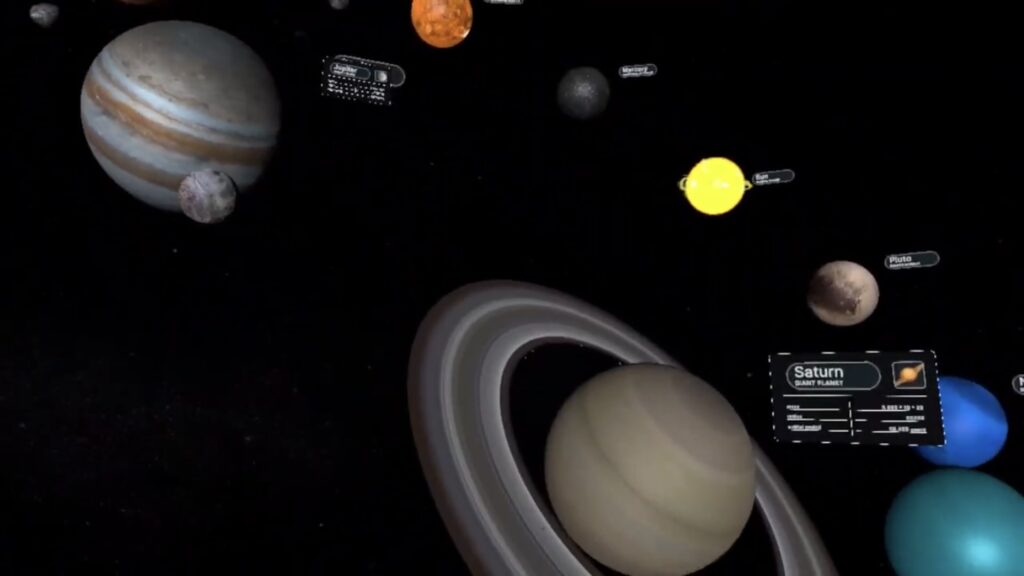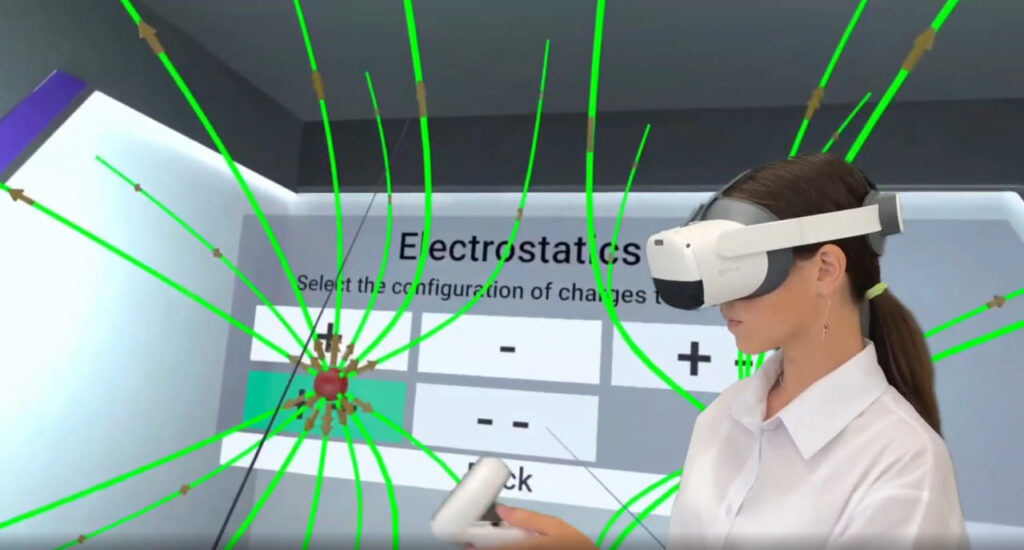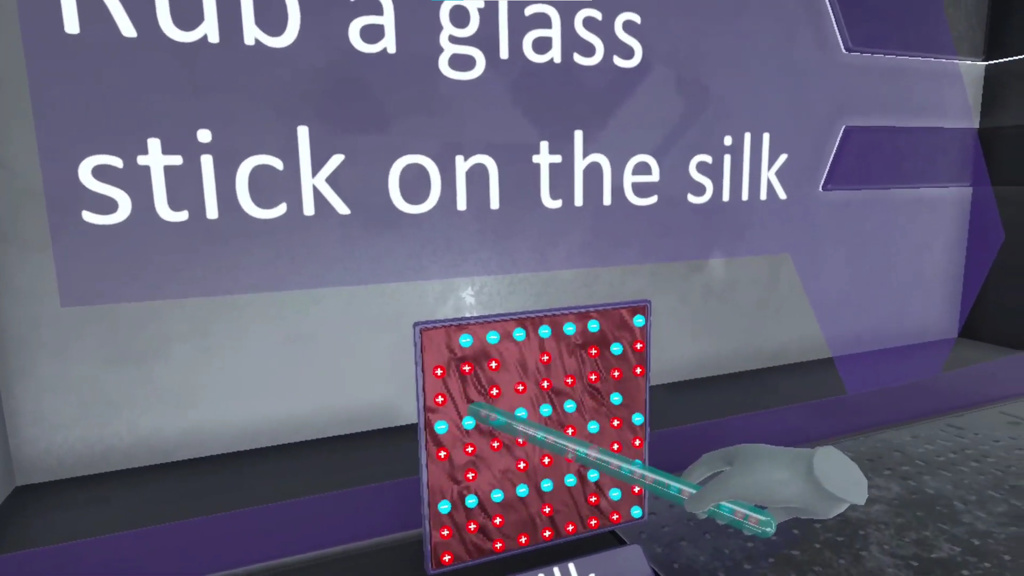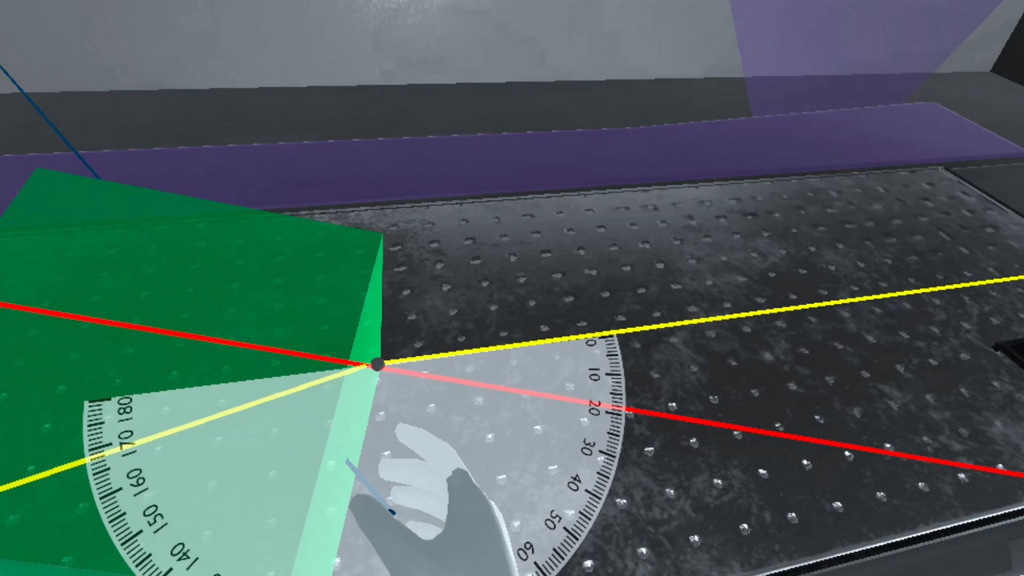

Physics is a fascinating yet complex subject that truly comes to life when students can get hands-on and experience the principles in action. Traditionally, schools have relied on textbooks and limited STEM labs for teaching physics, but VR education is now transforming the way students learn. With virtual reality in the classroom, students are not just learning about complex concepts—they are experiencing them firsthand. Imagine observing Coulomb’s Law in action or navigating through the solar system—all while seated at your desk. This immersive experience leads to a deeper understanding and long-lasting retention of the material.
Imagine stepping into a VR classroom where the laws of physics unfold before your eyes. At XReady Lab, we’ve designed virtual reality learning platforms that allow students to experience scientific principles like never before. Our STEM labs transform challenging physics concepts into interactive experiences, making it easier for students to grasp and apply what they learn in real-world scenarios:
Coulomb’s Law:
Instead of reading about electric charges, students can visualize and interact with charged particles, observing how they influence each other in a virtual reality classroom.
Solar System Exploration:
Travel through the solar system with virtual reality in education, where students can navigate between planets and understand the physics of planetary motion.
Electrification and Field Visualization:
With VR in schools, students can explore electric fields and their effects in real-time, making abstract concepts more tangible.
Diffraction and Light Behavior:
Our interactive classroom activities include simulations of light diffraction, helping students visualize wave behavior and interference in a more accessible way.

One of the most captivating applications of VR education in physics is the ability to travel through the solar system in 3D. Instead of viewing static images in a textbook, students can now orbit planets, zoom in on moons, and explore the dynamics of celestial bodies in real-time. This interactive classroom experience fosters a deeper understanding of planetary motion, gravity, and the scale of our solar system. With virtual reality in education, students don’t just learn about the universe—they can explore it.
Many physics experiments are too expensive or impractical to conduct in a typical STEM lab school. This is where VR for education comes in. With virtual reality classrooms, students can explore these otherwise unattainable experiments:
Laser Experiments:

Handling high-powered lasers is usually too dangerous for the classroom. But with VR headsets, students can safely experiment with laser optics, explore beam paths, and understand diffraction patterns—all without any risk.
Elementary Particle Visualization:

Learning in VR makes understanding quantum mechanics and particle interactions much easier by visualizing these processes on a fundamental level.
Vector Visualization:

In our interactive classrooms, students can manipulate vectors in 3D, gaining a better understanding of force, magnitude, and direction.
Traditional labs often come with safety risks and high costs, making certain experiments impossible. VR technology eliminates these obstacles, allowing students to explore advanced physics concepts—like high-voltage circuits or quantum mechanics—in a completely safe and cost-effective virtual environment. For example, working with dangerous high-voltage equipment or hazardous materials becomes possible in a virtual reality classroom without endangering students. Additionally, VR headsets for schools provide an affordable way for institutions to access simulations of advanced physics experiments that would otherwise be out of reach. This level of safety and accessibility is one of the key benefits of VR in education, ensuring that all students have access to cutting-edge learning tools in a risk-free environment.
The benefits of virtual reality in education are clear. Students using VR learning solutions are more engaged, can retain information better, and have the ability to interact with complex concepts in real-time. By introducing virtual reality for learning into the classroom, educators can bridge the gap between theoretical and practical understanding.
With VR, the digital classroom becomes a dynamic learning environment where students can experiment and explore without the usual limitations of time, space, or budget. This makes VR in education not just a tool for engagement but a necessity for preparing students for the future.
Imagine your students not just reading about physics concepts but actively exploring them through virtual reality. Whether it’s visualizing electric fields or traveling through the solar system, VR learning makes complex ideas come to life.
Eager to see the future of physics education? Request your free demo from XReady Lab today and experience how VR can turn your classroom into a state-of-the-art learning hub. Watch as your students get excited about physics, exploring complex theories through interactive simulations that make learning both fun and effective.
Request your demo now and take your classroom into the future!
Frequently Asked
We prodive VR biology, VR physics, and VR chemistry simulations. Please, check our catalog.
Please, fill the form to get demo labs for free.
Please contact our customer support service at support@xreadylab.com or book a call with the team to find out the conditions and book the VR class set up at your school.
Subscription to XReady Lab interactive VR labs. If you are a school, then you are also given access to the VR classroom system. VR class system helps you easily launch VR lessons for a large number of students, follow the experience of each student, as well as customise the content without developers.
We adhere to the world’s generally accepted recommendations and research. Our products are suitable for children from 12 years old.